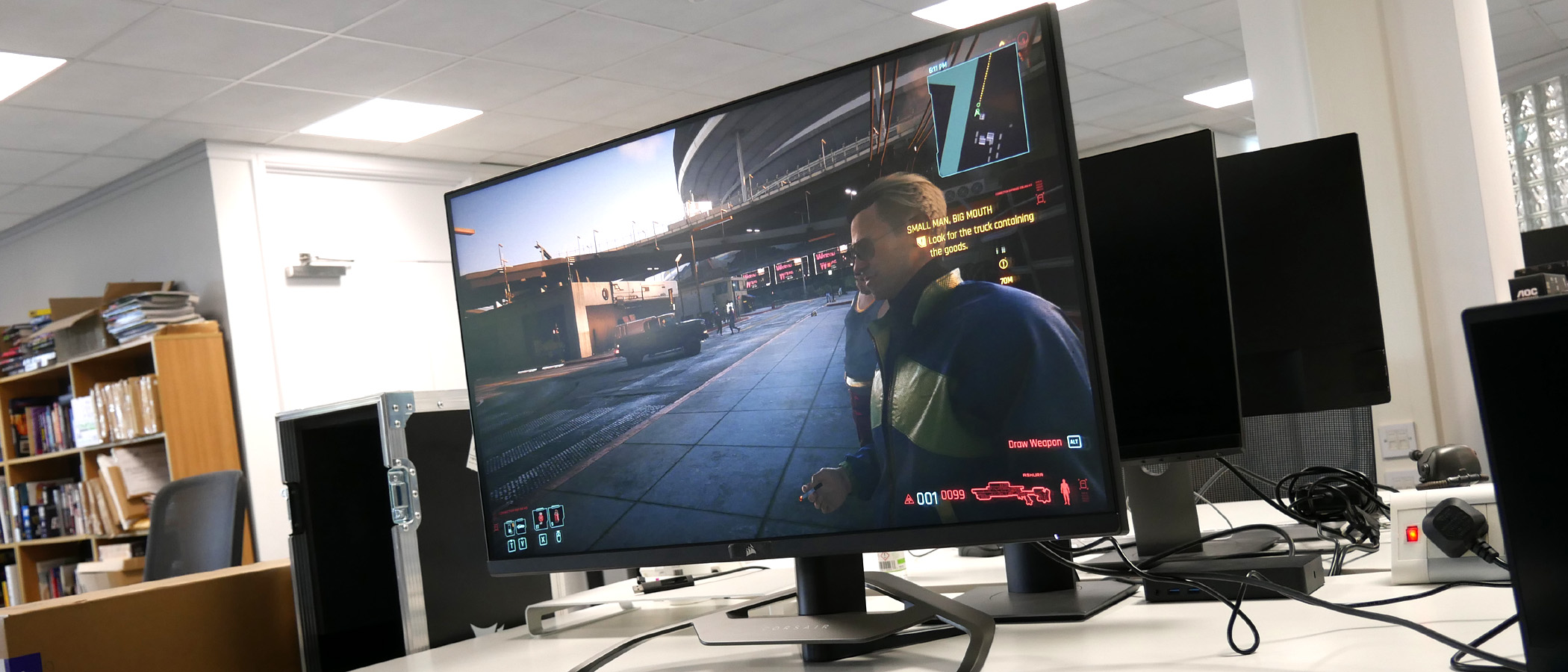GamesRadar+ Verdict
The Corsair Xeneon 32UHD144 is a new 4K 144Hz panel that's quick and pin-sharp that provides a wonderful gaming experience - but it’s not a true HDR performer.
Pros
- +
Sharp UHD visuals
- +
Zippy IPS response
- +
Great connectivity including HDMI 2.1
Cons
- -
Not a true HDR panel
- -
USB-C charging is limited
- -
This class of panel really should be cheaper
Why you can trust GamesRadar+
Thank goodness for small mercies in general and in particular in the new Corsair Xeneon 32UHD144. For once, here is a gaming monitor with a name that actually makes sense and you have half a chance of remembering. This is a 32-inch 4K (or UHD) monitor with a maximum refresh rate of 144Hz. The clue, unambiguously, is in the name.
It’s also a monitor that absolutely nails several key spec points when it comes to high-end gaming. Along with that 4K gaming monitor pixel grid and the 144Hz refresh, there’s HDR support with local dimming, 1ms claimed response times, and both HDMI 2.1 and USB-C with power delivery. On paper, this monitor has it all and is ready to roll with any gaming platform you prefer, be that desktop and laptop PCs or the latest consoles from Sony and Microsoft.
Of course, ‘on paper’ doesn’t always translate into a flawless real-world experience. As we’ll see, some of those ticked boxes turn out to be pretty perfunctory. But we’ll also discover that may not actually matter.
Design & Features
Up front and centre is that glorious 32-inch 4K panel. As you’d expect from a premium gaming monitor, it uses IPS technology. That’s generally a good thing when it comes to not only accuracy but also speed and response, hence the 144Hz and also 1ms response.
That said, the latter is measured by the more forgiving MPRT metric. There are numerous panels that achieve 1ms grey-to-grey, which typically translates into 0.5ms MPRT. But then there are response time claims and there’s the actual gaming reality; the two don’t always align. You also get AMD FreeSync Premium support and Nvidia G-Sync compatibility, so adaptive sync is well covered.
As for HDR support, this is a DisplayHDR 600 certified panel, so it tops out at a punchy 600 nits in HDR mode (and 400 nits in SDR mode) and boasts local dimming. The not-so-slight snag is that the local dimming comprises 16 edge-lit zones, which really isn’t local dimming worthy of the name. A mini-LED backlight with 1,000-plus zones? That is real local dimming.
Factor in the modest 1,000:1 static contrast ratio of the panel, a typical IPS limitation, and it’s clear that expectations should be kept in check. This isn’t going to scare a mini-LED monitor let alone an OLED panel for HDR thrills.
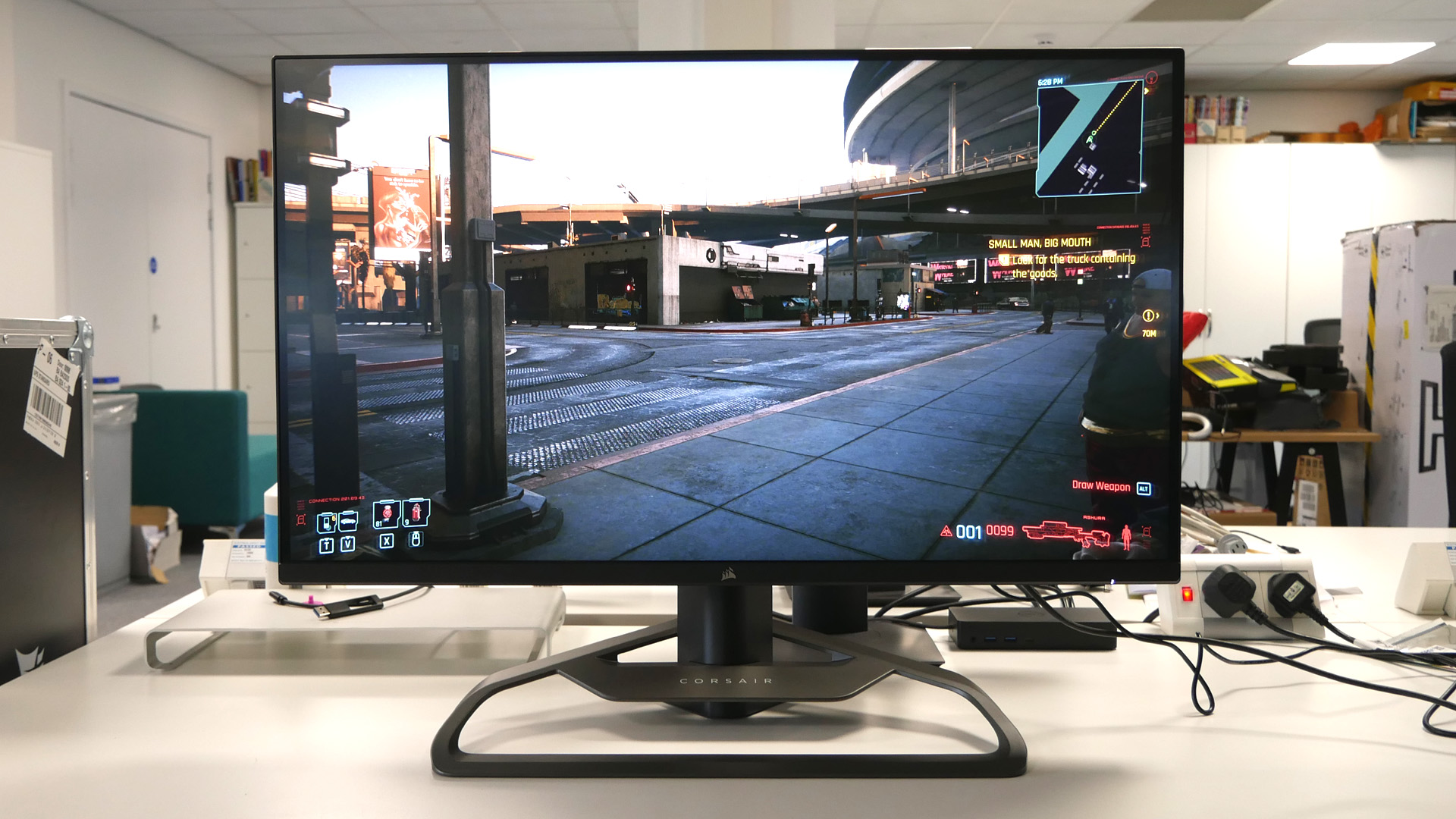
All that said, this is still very much a quality panel. The backlight is enhanced with quantum dot tech, widening the colour output. It’s enough for 100 per cent coverage of the Adobe RGB gamut and 98 per cent of the DCI-P3 digital cinema colour space. If all that doesn’t mean much to you, well, just know that this thing does colours well. Really well.
Another minor letdown after the not-really-HDR issue is the USB-C connectivity with power delivery. The problem is that the latter is limited to a mere 15W which isn’t really enough to keep a thin-and-light laptop juiced, let alone a gaming portable. Still, with DisplayPort 1.4 and HDMI 2.1 ports, the really important bases are covered, including a place as a potential PS5 monitor or Xbox Series X monitor given the screen is capable of 4K at 120Hz. For the record, you can have the full 144Hz on a PC over all three of the input options.
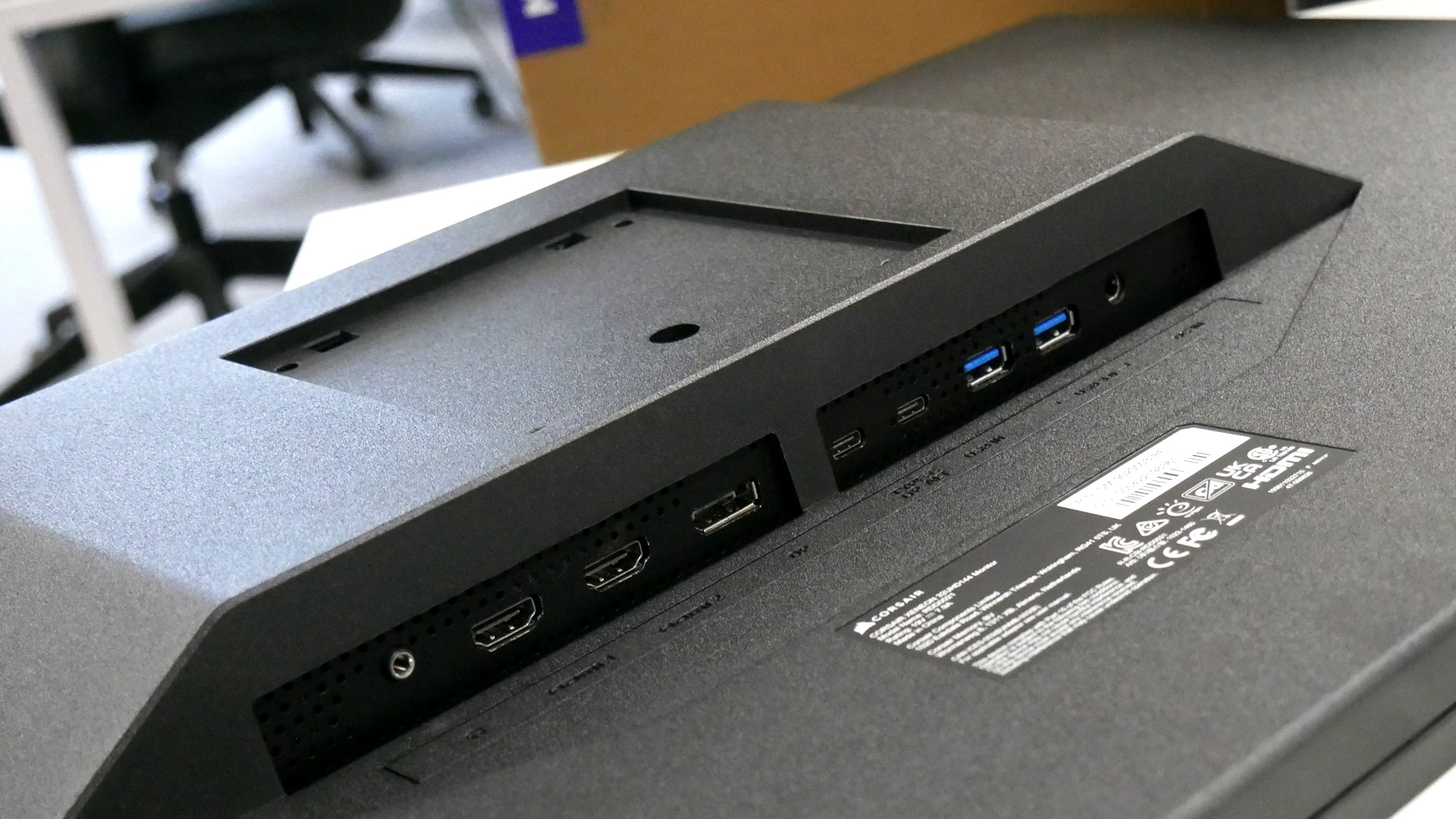
On the design side, the Corsair Xeneon 32UHD144 probably isn’t a conventional beauty. You have to respect the heft of the alloy stand, it’s a serious bit of hardware that offers height, tilt, and swivel adjustment. But it also eats up an inordinate amount of desk space. As it happens, the stand is actually optional. Skip it and there’s 100mm by 100mm VESA mount support in lieu. In the US, the stand ups the price from $899 to $999, while in the UK the only current pricing is £949 with the stand (at time of writing). The panel itself has slim bezels on three sides so doesn’t exactly look dated. But slick and sleek the Xeneon ain’t.
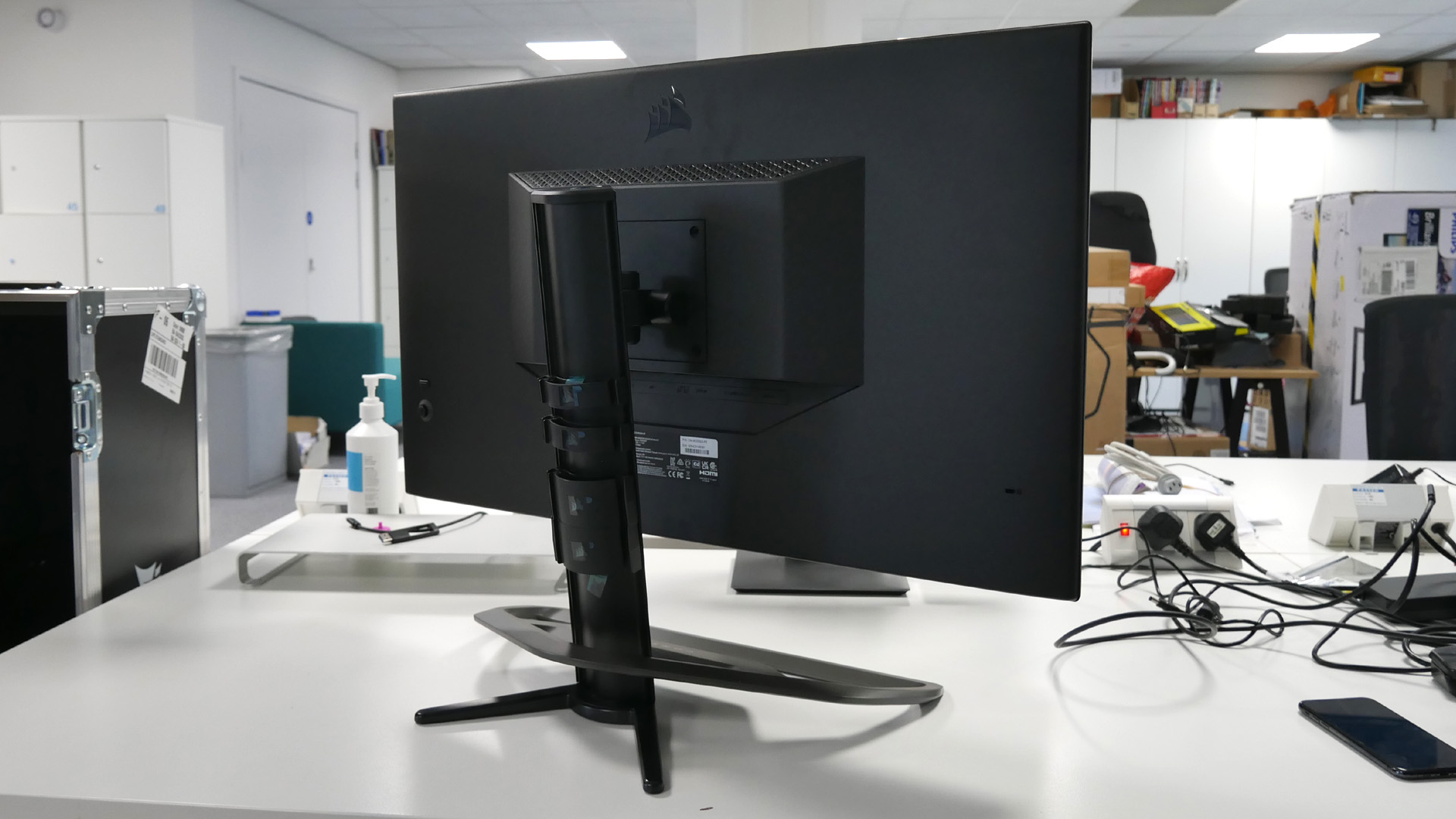
Performance
Out of the box, the Corsair Xeneon 32UHD144 is a cracker. It’s punchy, vibrant, and responsive. Strictly speaking, the colour temperature is a tiny bit warm by default, but that’s easily fixable if you care. The OSD menu includes three levels of conventional pixel overdrive for tweaking response, plus a dynamic mode. In the fastest of the regular modes plus the dynamic mode there’s some visible overshoot and inverse ghosting, so we’d probably steer clear of those. But wind it back from ‘fastest’ to merely ‘fast’ and this monitor bears comparison with the best IPS gaming monitors, whatever the official rating. It’s quick.
Flip to HDR mode and things are less impressive. A vibrant, visuals-orientated, and HDR-heavy game like Cyberpunk 2077 probably does look zingier running in HDR. But it’s marginal. For our money, it's better to view this screen as a really nice, punchy SDR monitor and revel in the crazy sharp 4K visual combined with decent 144Hz refresh and great response.
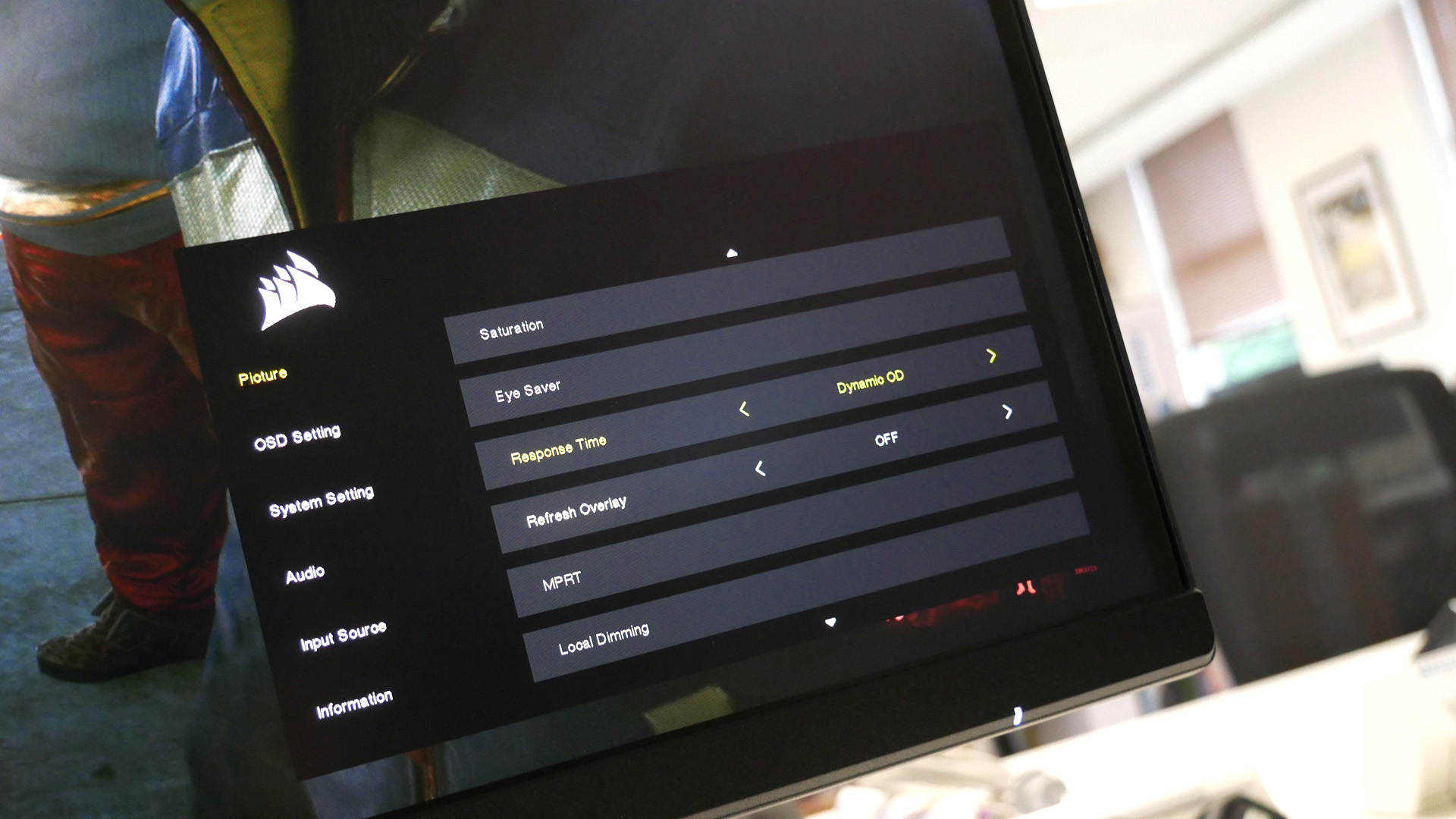
Speaking of the 144Hz refresh, it’s worth remembering that in PC terms you’re going to need one heck of a graphics card to maintain sufficient frame rates. Thankfully, graphics card prices are coming down and a new generation of GPUs from Nvidia and AMD arrive later this year which should make 4K at 100Hz-plus more affordable than ever. But it still won’t be cheap. Not even close.
Other downsides are few and far between, though this panel isn’t that great off-angle and betrays a fair bit of characteristic IPS glow. Games with lots of darker scenes that benefit from great viewing angles and excellent contrast aren’t the Corsair Xeneon 32UHD144’s forte.
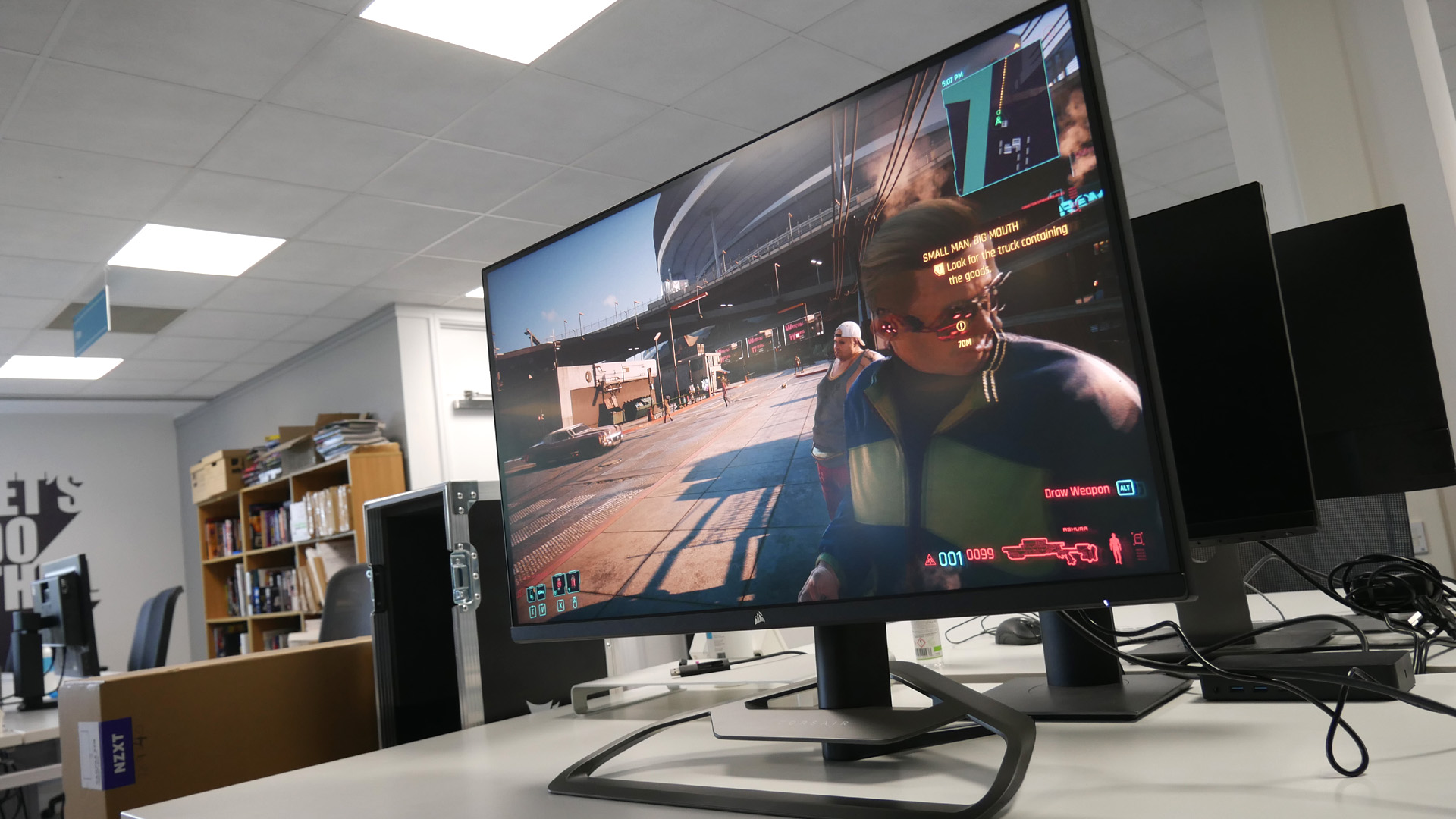
Overall - should you buy it?
What you make of the Corsair Xeneon 32UHD144 will depend on your expectations and demands. If genuine HDR thrills are critical, jog on, this is not the monitor for you. If you want a zippy, super sharp 4K experience and punchy SDR visuals are fine, this is a great option. The only problem is the price. At this level, it’s all too easy to observe that an excellent 120Hz OLED TV like the LG C1 or this year's LG C2 is pretty much within reach, which feels like so much more screen for the money, especially for console gaming.
It’s a less direct comparison on the PC where a 40-inch plus panel is questionable regarding desktop ergonomics. The Xeneon’s 32-inch proportions are a far better fit. It’s also absolutely true that this monitor is not overpriced versus comparable screens from other manufacturers. Instead, we wish this whole class of not-quite-HDR 32-inch 4K high refresh monitors were a lot cheaper. Either that or they should get their act together and deliver true HDR performance.
How we tested the Corsair Xeneon 32UHD144
Our standard routine includes a mix of test images and real-world usage. We’re looking for everything from color accuracy and response, to latency, brightness, and contrast. We test both in SDR and HDR modes to see how a screen performs in each regime. Gaming-wise, we fire up a range of different genres to assess a screen’s suitability, dig deep into the OSD menu and check out all the core features, from refresh rates to adaptive sync. We also consider performance as an all-purpose monitor on the Windows desktop, along with ergonomics and connectivity.
You can read more about how we test gaming monitors at GamesRadar+ or read more about our whole approach to gaming tech in our Hardware Policy.
After 4K but want something more TV-shaped? Check out the specialist TVs for players, in our best gaming TV, best TV for PS5 and Xbox Series X, and best 120Hz 4K TV guides.
A serious dissertation on the finer points of input lag and overshoot followed by a forensic examination of AI-accelerated temporal upscaling. Such is a routine day in the working life of long-time tech wordsmith, Jeremy Laird. Along with GamesRadar, Jeremy’s 15-year back catalogue includes a host of tech and gaming outlets, including TechRadar and PC Gamer, not to mention contributions to mainstream media from the Independent to the Evening Standard. Complimenting Jeremy’s debilitating addiction to all kinds of digital hardware, he is also afflicted by an obsession with and a significant occupational sideline in cars and automotive technology.
